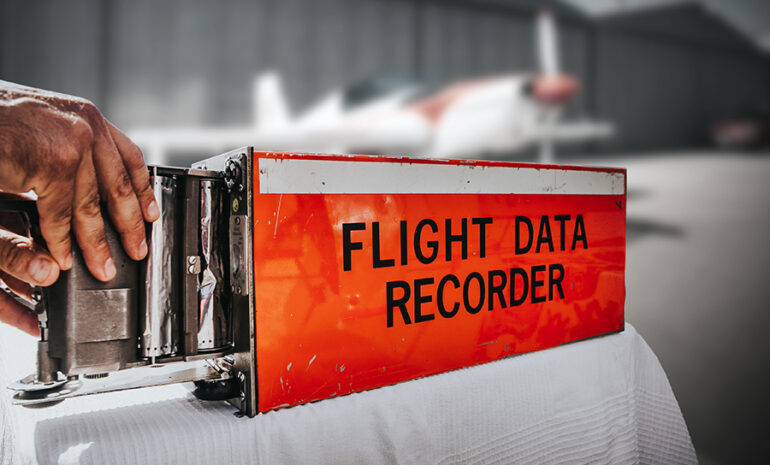The Blackbox: A Deep Dive into Aviation’s Most Critical Technology
When we think of aviation safety, the term “black box” often comes to mind. This small but crucial device has become synonymous with investigating aircraft accidents and improving flight safety. But what exactly is the black box, and why is it so essential to modern aviation?
In this blog, we’ll take a deep dive into the technology behind black boxes, their history, how they work, and their pivotal role in shaping the future of aviation.
1. What is a Black Box?
Contrary to its name, the black box isn’t black at all—it’s typically bright orange, making it easier to locate after a crash. Officially known as the Flight Data Recorder (FDR) and Cockpit Voice Recorder (CVR), the black box is a flight recorder device used to collect and store data from an aircraft during flight.
- Flight Data Recorder (FDR): This device records critical flight parameters such as airspeed, altitude, engine performance, and flight path.
- Cockpit Voice Recorder (CVR): This captures conversations between pilots, radio communications, and any sounds or alarms within the cockpit.
These two devices together provide investigators with a complete picture of an aircraft’s final moments, offering valuable insight into what might have gone wrong.
2. A Brief History of the Black Box
The invention of the black box is credited to Dr. David Warren, an Australian scientist who developed the first flight data recorder in the 1950s after witnessing the mysterious crash of the world’s first commercial jet, the de Havilland Comet. His idea was to create a device that could capture what was happening in the cockpit and monitor the aircraft’s performance in the event of an accident.
Initially, the idea met resistance, but by the 1960s, black boxes were mandated in commercial aircraft. Today, black boxes are standard in all modern aircraft, and they continue to evolve with advances in technology.
3. How Does a Black Box Work?
The black box is designed to be virtually indestructible. Encased in hardened steel or titanium, it can withstand immense impact forces, extreme temperatures, and even underwater pressures for prolonged periods. Here’s how it works:
- Data Collection
The FDR and CVR are connected to the aircraft’s onboard systems. The FDR records over 80 parameters, including:
- Flight path (latitude, longitude, altitude)
Airspeed and engine performance
- Control positions (rudder, ailerons, elevators)
Aircraft accelerations and environmental factors
The CVR, on the other hand, captures audio in the cockpit, including communications between pilots, with air traffic control, and ambient sounds like alarms and engine noises.
- Storage and Survivability
Both the FDR and CVR use solid-state memory to store data. The devices are located in the tail of the aircraft, a part of the plane that typically experiences the least damage in a crash. They are designed to withstand:
- Temperatures as high as 1,100°C (2,000°F) for 30 minutes
Submersion in saltwater for up to 30 days
Impact forces of up to 3,400 G (34 times the force of gravity)
- Data Retrieval
After an accident, the black box is recovered, and its data is extracted for analysis. Investigators use this data to reconstruct the flight’s final moments and determine the cause of the crash.
4. The Role of the Black Box in Accident Investigation
When an aircraft accident occurs, the black box is one of the first things investigators seek. The data it holds is often crucial in identifying the factors leading up to the crash. By analyzing flight data and cockpit conversations, investigators can determine whether human error, mechanical failure, or environmental factors played a role.
In addition to its role in accident investigation, the black box helps improve flight safety by providing insights that can prevent future incidents. For example, following the analysis of black box data, airlines and manufacturers can issue safety advisories, modify aircraft design, or enhance pilot training programs.
5. Advancements in Black Box Technology
While traditional black boxes have served aviation well, technological advancements are pushing the boundaries of what these devices can do.
- Real-Time Data Streaming: One major challenge with black boxes is that they are only accessible after an accident. To address this, some companies are working on technology that allows real-time data streaming from aircraft to ground stations. This would enable real-time monitoring of flight data, potentially allowing issues to be identified and addressed before an accident occurs.
- Deployable Recorders: Some modern aircraft are equipped with deployable black boxes. In the event of an accident over water, the recorder detaches from the aircraft and floats, making it easier to recover.
- Expanded Data Storage: As aviation becomes more complex, the need for more data points is increasing. Future black boxes may capture additional parameters related to aircraft systems, environmental conditions, and pilot behavior.
6. Challenges in Black Box Technology
While black boxes are incredibly valuable, they come with some challenges:
Recovery Difficulties: In cases of crashes over deep oceans, like the disappearance of Malaysia Airlines Flight MH370, recovering the black box can be incredibly difficult. This has spurred discussions on developing technologies like real-time data transmission and satellite-based tracking for aircraft.
Privacy Concerns: The cockpit voice recorder (CVR) captures not just operational commands but also private conversations between crew members. This raises concerns about pilot privacy, although most agree the safety benefits outweigh these concerns.
7. The Future of Black Box Technology
As aviation technology continues to evolve, the black box will continue to be a critical tool for flight safety. Future advancements, including cloud-based data storage, enhanced survivability features, and real-time monitoring, will likely redefine how black boxes function.
Furthermore, as aircraft become more autonomous, black box technology will need to evolve to capture the increasingly complex data that governs autonomous systems.


